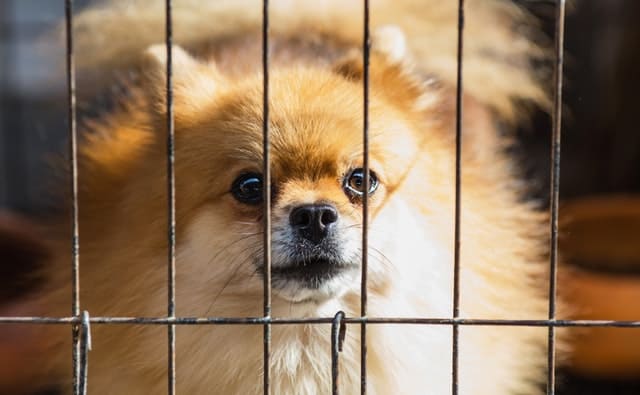
FAQ’s Quarantine & Isolating Dogs with Parvo
When we hear the word “Quarantine” we might instinctive think: lonely, cold and uncomfortable. If that’s where your mind goes, rest assured, that is NOT what quarantine means to us. Wherever you choose to isolate a dog, it should be warm, quiet and comfortable. Dogs recovering from parvo have a weakened immune system and need all the rest they can get. Quarantine protects the suffering dog from secondary infections and helps contain the contagious viral particles.
When to Quarantine a Dog with Parvo
Isolate a dog with parvo at the first signs of parvo when possible and upon confirmation that your dog has parvo. Continue quarantine until your dog is no longer shedding the parvo virus and tests negative for parvo.
As for humans, quarantine will make your life so much easier. Cleaning and disinfecting will be less intensive than if you allow your dog with parvo to roam freely throughout your home or establishment.
Where is a good place to quarantine my dog with parvo?
There are a few methods and that will likely depend on your home situation.
If you have an extra room that no one uses such as an office or spare bedroom, you can isolate a dog there. If it’s behind closed doors, it is still recommended to use a large kennel, cage, or wire type pen, so the dog doesn’t roam the entire room. Take a look at these two examples:

How long does my dog with parvo need to be isolated?
Your dog should stay isolated until she gets a report from a medical professional that clears her of parvo.
How do I prepare a quarantine room for my dog with parvo?
For your own sake, make decontamination as easy as possible. It is recommended to lay down cardboard or a rug (you’ll throw out) on top of the floor. Then, on top of that, tape down puppy pads to catch and absorb the dog’s vomit or feces in the early stages of parvo. Puppy pads are easy to roll up and swap out and you’ll likely be doing this in the early treatment phase if your vet has sent your dog home.
Have a supply table or supply box (out of dog’s reach) filled with your parvo killing cleaner of choice, spray bottles, puppy pads, rags, gloves, mask, garbage bags, a refillable water jug, paper overalls or clothes you’re going to throw away.
If you are looking for even more information about the quarantine setup, isolation room and helpful supplies be sure to read our page: Home Guide-Recommended Products for Parvo Isolation Room
Should my dog with parvo be brought outside to poop?
In the beginning stages of parvo and early recovery you may find it easier to tape puppy pads to the floor as described. Once your dog regains control of his bowels, he should be brought to a special outside setup. Parvo is really hard to clean in a yard when you allow your dog to defecate everywhere, so the setup should be small and contained.
Rope or fence off a small area of your yard (4×4 or 6×6 should be plenty). Roll out a sheet of heavy mil plastic and top it with a generous layer of mulch or sand (this avoids splashing). Take your dog only to the special setup place for bathroom breaks.
After your dog does his business, take the poop and a healthy portion of underlying mulch or sand and double bag it. Spray it with a parvo killing disinfectant before tying it off and disposing.
When your dog gets a clean fecal test, you’ll spray this with a parvo cleaner and roll up the entire sheet of plastic, double bag and dispose.
For a complete list Parvo Cleaners and recommended products for treating parvo in home: Recommended Products for Treating Parvo in Home
What do I do with poop covered puppy pads?
At this time, parvo infected feces is not regulated, but please do the world a favor and kill the parvo virus with your cleaner. Have a garbage bag ready, then spray the puppy pad with your parvo killing cleaner of choice. Roll up the soiled pad and place it inside the garbage bag and spray the inside of the garbage bad with a few squirts of parvo killer for good measure. Tie the garbage bag tight and dispose.
If you’re using bleach, be sure to remove your dog during every cleaning. Wear a mask and gloves to avoid respiratory and skin irritation
Should the Quarantine Room be Cool or Warm?
Dogs recovering from parvo might have a fever and are likely to get chilled more easily. Keep their room warm 70-75 degrees Fahrenheit and free of drafts. Feel the floor and bedding, not just the air temperature.


